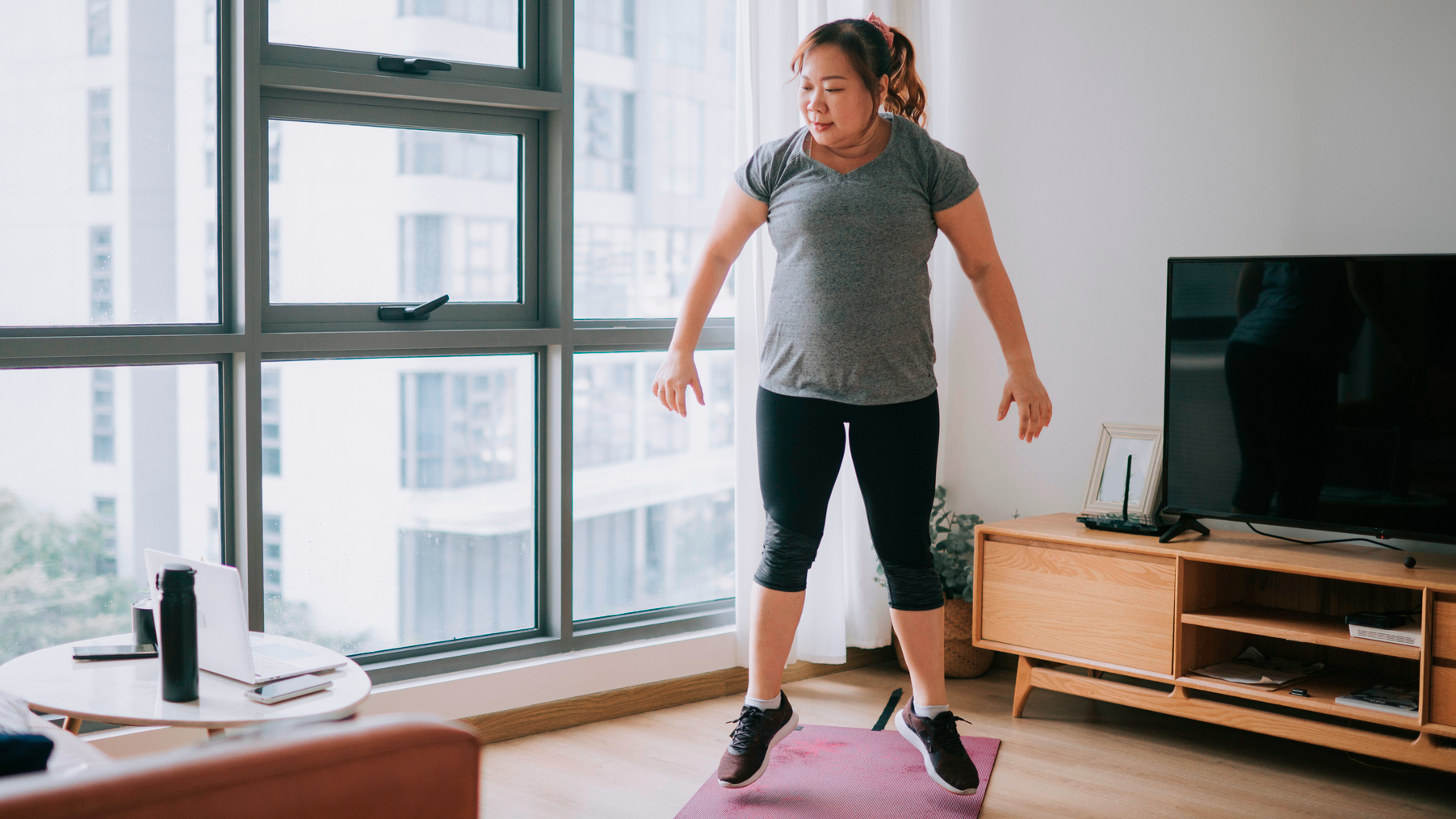If you’re over 40 you should be doing this one underrated type of exercise, according to a physical therapist
Plyometrics will improve your muscle and bone health

You've probably heard all about the benefits of low-impact exercise styles like Pilates and weight training—and it's true that low-impact workouts are an effective way to build strength without putting too much pressure on your joints.
But this doesn't mean high-impact exercise is automatically bad for you. As long as you aren’t injured and have enough strength to cope with the physical demands (check with a suitably qualified professional in-person first), high-impact exercise like plyometrics helps to protect your body from some of the issues that can naturally occur as we get older.
"As we age, we lose muscle mass, power and coordination,” says physical therapist and founder of The Swiss Touch Laura Wilson. “The number one thing in improving life longevity is your muscle mass and plyometrics is perfect for improving muscle mass.”
The benefits of plyometrics to future-proof your body
There are a number of reasons plyometrics can improve your overall health. For a start, it strengthens your muscles in a unique way.
“Plyometrics helps improve muscle mass, joint health and bone health, because the stronger your muscles are, the less force you put through your bone system and your skeletal system,” says Wilson.
It can also improve your tendon health. “Tendons attach your muscles to your bones,” says Wilson. “Plyometric training improves tendon flexibility and efficiency of the muscles, so it can reduce the risk of injury."
Plyometrics requires explosive, powerful movements. You might not think that you need to train for power, but Wilson says that this has specific practical benefits for longevity.
Start your week with achievable workout ideas, health tips and wellbeing advice in your inbox.
“Plyometrics maintain power in the muscles, which is good for preventing falls, maintaining balance and coordination,” she explains.
However, plyometrics aren’t especially beginner-friendly.
“These exercises need to be done with caution. You need to make sure you've got a really good foundation first before you try plyometrics,” cautions Wilson.
“Start with Pilates-style exercises first and once you’ve got a good biomechanical base, then you can add in plyometrics.”
But for people who are healthy and fit, plyometrics should always be part of a varied exercise routine.
“You need to be doing a little bit of everything,” says Wilson. “If you were just doing HIIT training, I don’t think that is the perfect way of exercising. But I do think it’s a key component for that explosiveness and power, and you don't get that from Pilates or weight training.”
If you do try plyometrics, start small and make sure you keep the reps low and give yourself plenty of time to recover between sets or rounds.
Beginner plyometrics routine
Yoga teacher and osteopath Jelene Lieberberg recently shared a beginner-friendly plyometric workout on Instagram that she says everyone who is approaching middle age or older should try.
A post shared by Kick Ass Yoga | Yoga & Movement Coach (@kickassyoga)
A photo posted by on
All you need to do this routine is access to a raised surface, such as a couch or a chair. Make sure it’s stable and won't move, because you’ll need it to balance one of your legs.
Each movement in the video is a single-leg exercise, so remember to perform each move on both sides.
Alice Porter is a freelance journalist covering lifestyle topics including health, fitness and wellness. She is particularly interested in women's health, strength training and fitness trends and writes for publications including Stylist Magazine, Refinery29, The Independent and Glamour Magazine. Like many other people, Alice's personal interest in combining HIIT training with strength work quickly turned into a CrossFit obsession and she trains at a box in south London. When she's not throwing weights around or attempting handstand push-ups, you can probably find her on long walks in nature, buried in a book or hopping on a flight to just about anywhere it will take her.